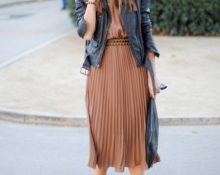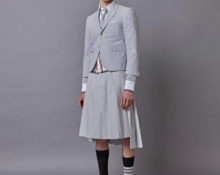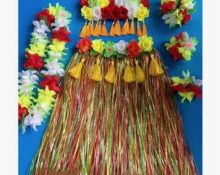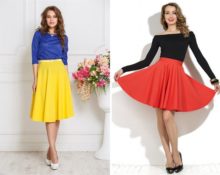A skirt is a piece of clothing that goes around the waist. Its length varied depending on fashion trends. From strict styles, with length to toe. To revealing minis. Skirts with slit and pleats, tight or fluffy – the style variations are varied. The entire history of fashion is in this piece of clothing.
Reference. The animal skin loincloth worn by ancient people is considered the prototype of the modern skirt. It performed a purely protective function. It was worn by both men and women, regardless of age.
The birthplace of the famous plaid pleated skirt is Scotland. The first dated mentions are found already in the sixteenth century. It is described as an outer garment that encircles the waist. Made of woolen fabric of various colors, with many folds. With a length reaching to the middle of the calves. And we are talking about the traditional men's attire of the local highlanders. Why did they wear skirts? The terrain with gentle slopes, streams and swamps required clothing that did not restrict movement for free movement.At the same time, warm and quick-drying in the wind.
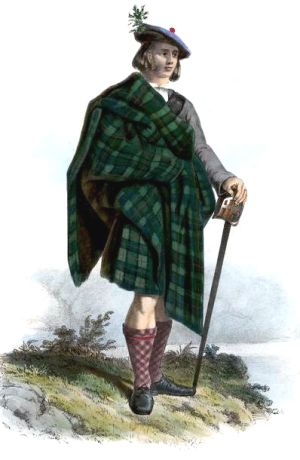
Reference. Natural dyes used to tint fabric threads made it possible to determine from which area a person was from by the color of the fabric.
Kilt
The national Scottish men's costume is the kilt. The name comes from the Scandinavian languages and means things with a pleat. This is a checkered wrap skirt. Traditionally, made from wrinkle-resistant wool fabric.
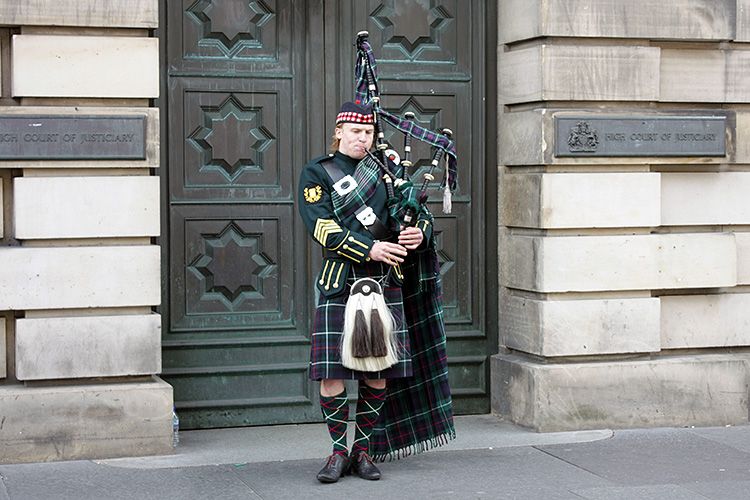
A variety of checkered colors are achieved by the technique of weaving multi-colored threads along and across the fabric. This creates a consistent pattern of stripes of different colors. The number of colors and their combination on the fabric can tell about the social status and membership of a particular clan of the person wearing the kilt.
Reference. Tartan is a checkered pattern on thick woolen fabric for kilts, has established color patterns. In Scotland, it is still a moral violation to wear a registered tartan without belonging to a particular clan.
The kilt was originally a plaid made from two pieces of fabric. Up to 8 meters long and 6 meters wide, it was called the “Big Kilt”. Men girded themselves with it, and threw a long train over their shoulders. The lower part was gathered in folds and secured with leather belts with buckles on the belt. Folds made it possible to increase the length of the fabric. The upper part was used as a cover from bad weather, as a cape or hood. The kilt also served as a blanket during long journeys and in the field for spending the night in the open air. Rough, dense fabric can serve for many years without fraying or losing its attractiveness.
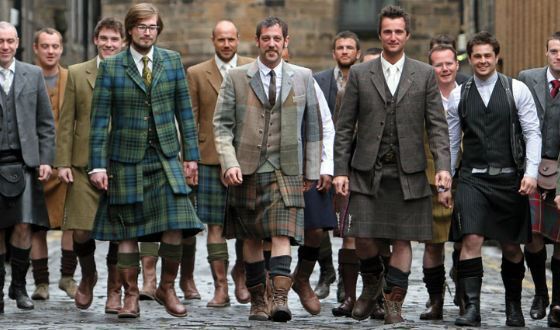
By the eighteenth century, the subject matter of traditional men's costume had changed.Thomas Rawlins from Lancashire suggested his workers get rid of the voluminous trains of skirts that interfere with production. To determine a comfortable length, men squatted, and the edges of the fabric spreading along the floor were cut off. Other workers followed their example. A kilt without a cape is called a “small kilt.” This is what they mean by Scottish skirt.
Who wore
Scottish traditional costume has different variations. For practical reasons, warlike Scottish highlanders wore the “Big Kilt.” For their many battles, it is still considered a symbol of independence and courage. They were the first men to wear plaid skirts.
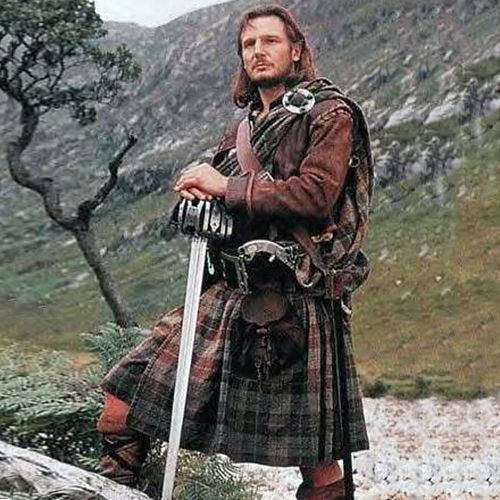
The national men's costume, in addition to the kilt, includes a leather belt bag - a sporran and a miniature knife. It became a common vestment for the military and not only the nobility several centuries later - in the nineteenth century.
Reference. Highlanders did not wear underwear under their kilts. This tradition persisted for quite some time, even when the “small kilt” became a common item of clothing among Scottish men.
The number of colors on the fabric of a Scottish skirt spoke of class. The simpler, the lower in the hierarchy. Servants were required to wear one-color kilts. Simple patterns of two colors - villagers. The sign of a military man is a tartan of three colors. The higher the rank, the more. A checkered kilt of six colors was usually worn by artists: orators and bards. A complex ornament with a large number of colors could only be worn by a leader. The title was inherited, as were the colors of distinction.
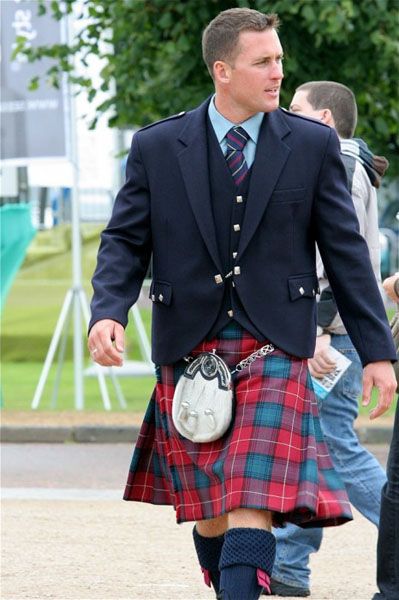
Gradually, wearing a kilt began to spread among residents of nearby countries through wandering Scots: Ireland, Isle of Man, Great Britain.
Reference.The British crown, as punishment for the participation of the Scots in the Jacobin uprising, banned the use of tartan and the wearing of kilts for men. Mandatory to wear trousers. The restriction was in effect until 1822. But wayward men, faithful to traditions, had violated it until that time: they wore trousers not on themselves, but with them. Thus, the kilt became a distinctive symbol of Scottish rebellion.
As an element of the Scottish military uniform, the kilt can still be seen during parade processions, on civil servants, and during ceremonies. In modern Scotland, men dress in ceremonial national costumes exclusively on holidays. As a sign of patriotism, it is worn during special events for the country. And not only in Scotland. For example, during the football cup.
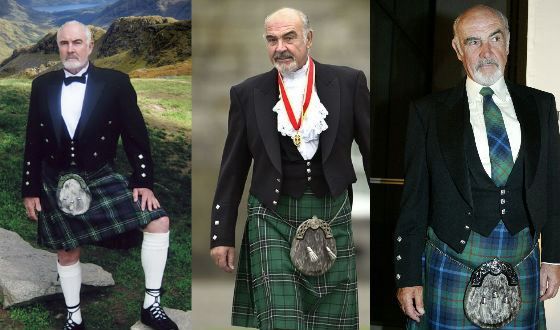
Reference. Kilt pin is a pin that is attached to weigh down the fabric so that it does not rise in the wind and does not ride up when walking. Historically, it was attached to the outside of the kilt, so that it could be easily unfastened if necessary. Performs a decorative function. The pin often has symbolic forms: a sword, a dagger with clover or in the form of a thistle flower.
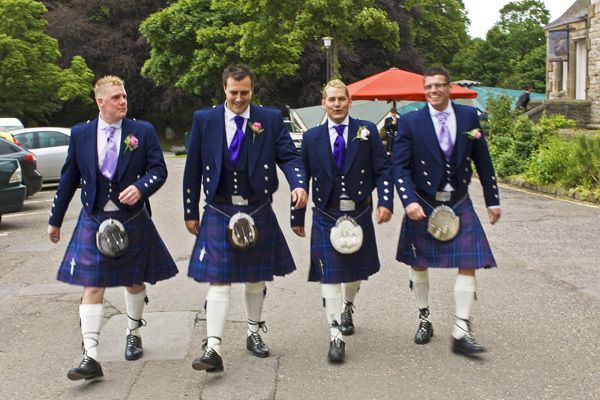
Modern tendencies
The checkered print has stood the test of time. It is readily used by modern fashion designers. And a checkered skirt, as a tribute to tradition, is called “tartan”. Length and style have different variations. The cage size and color scheme allows you to choose a skirt for all body types.
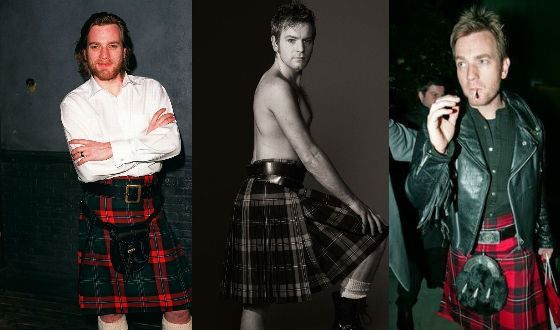
In the 1970s. stylish fashion designer from Scotland, Ray Petrie arrived in London. Inspired by the rebellious spirit of the streets of that time. He combined accessories from subcultures with unpredictable ethnic elements. Founded the Buffalo Fashion House. He created extraordinary images of men in Scottish skirts.Later, they inspired Jean-Paul Gaultier to create a collection of modern kilts or skirts for men.
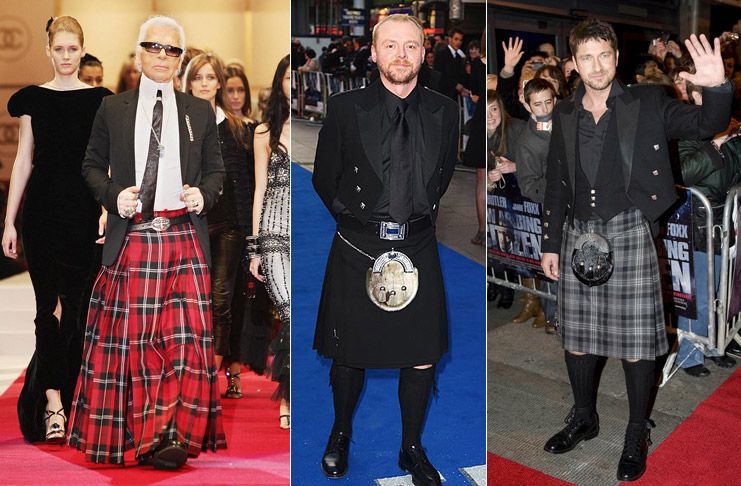
Reference. In 2003, the exhibition "Bravehearts: Men in Skirts" was held in New York. Her goal was to attract public attention not to the traditional Scottish skirt, but to popularize skirts in the men's wardrobe. To do this, the exhibition representative walked several blocks in a skirt. After which he concluded that only a brave man who is not afraid of judgmental glances can wear a skirt.
Discreet checkered skirts are already a classic of a strict dress code. Pairs perfectly with a plain shirt. The colors of Scottish skirts are bright colors, shorter lengths - laconic in the stylish “college” direction. Pair with a fitted jacket in the English style and classic shoes to balance out the look.
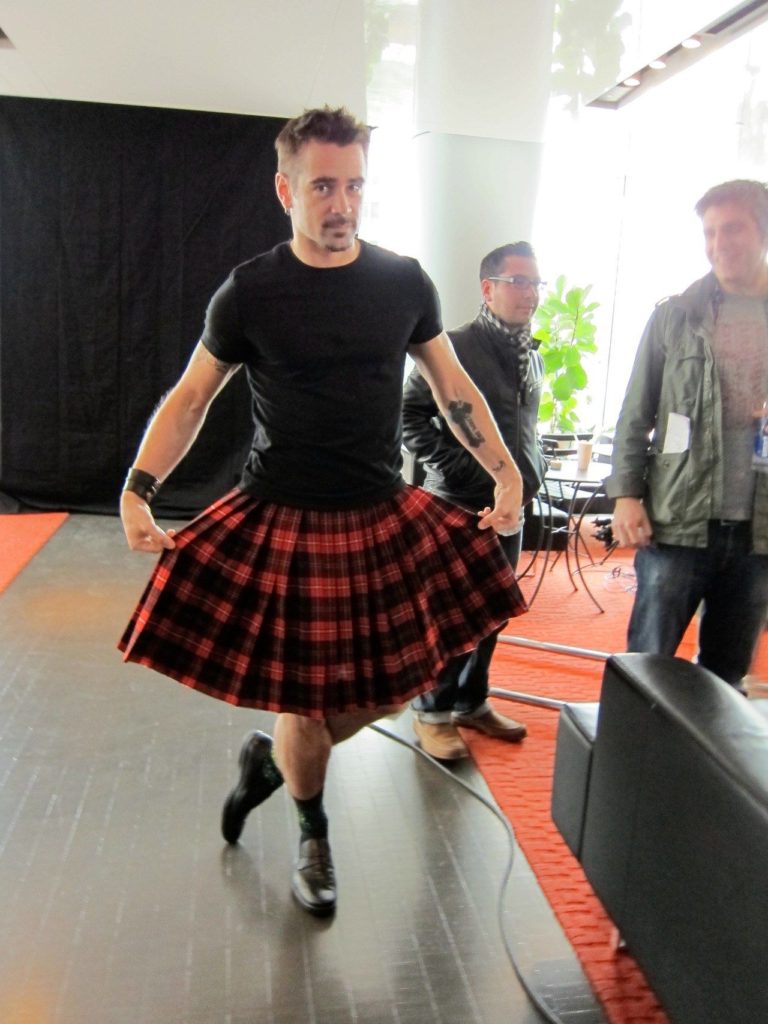
A voluminous knitted sweater or a monotonous T-shirt, a denim shirt - you can combine almost any top with a Scottish skirt, both in color and texture. The same goes for shoes.
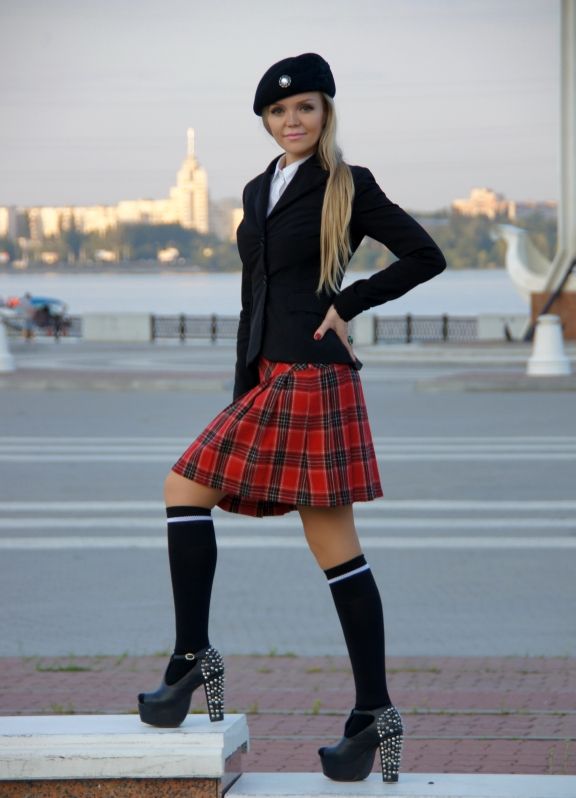
Currently, the Scottish skirt is predominantly an item of women's clothing. But, who knows, changing fashion often brings surprises.
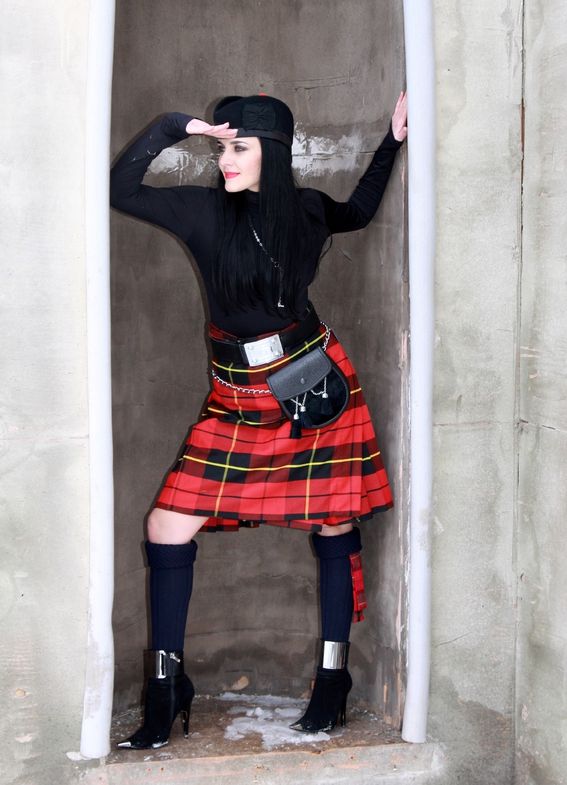


 0
0